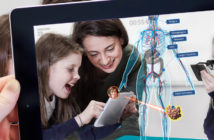By Nick Hawkins, managing director EMEA at Everbridge
The definition of a crisis can differ dramatically dependent on the industry and the stakeholders involved. The magnitude of a crisis in healthcare is unpredictable and can evolve quickly. Efficient management of an emergency can be the difference between life and death.
With a rise in the number of critical events worldwide, it is more important than ever that emergency services have the tools to locate and communicate with staff, in a timely, measurable manner. Business continuity professionals need to review communications practices and consider the benefits that critical communications technology can offer.
Importance of multi-modality
The March 2016 terror attacks in Brussels showcased how important multi-modal communications are in the modern world. Belgium’s response to the attacks was complicated by a communications blackout, understaffing and a series of false alarms. During the attack, the mobile phone network went offline, making standard mobile communication impossible.
Emergency services resorted to emails, iPad messages and a radio communications system called Astrid which medical staff found too complicated and time consuming. Lt. Col. Eric Mergny, who coordinated the medical response at Brussels Airport, said that Astrid limited his communications so much that he was unable to check which local hospitals had the capacity to take patients. This led to the miscommunication that hospitals were full which later turned out to be incorrect.
No communications channel is 100% reliable 100% of the time, so multi-modality transforms the speed at which people receive a message. Multi-modality facilitates communication via more than 100 different communication devices and contact paths including email, SMS, VoIP calls, social media alerts and mobile app notifications, amongst many others. Critical communications platforms that offer multi-modality can even be integrated with tannoy systems or digital signage to deliver a more effective and holistic communications strategy.
In a critical emergency every second counts, so business continuity professionals should consider the need to create and deliver bespoke templates that require a simple push of a button to respond to.
For instance, if a crisis breaks out in central London, local hospitals could send a notification to staff in the vicinity to find out if they are available to help. The message could have the option to reply with “I am available” or “I am not available” with one-button press, enabling a clearer picture of staff availability within minutes.
Deploying a critical comms platform
Businesses have traditionally been early adopters of critical communications platforms but there has been increasing interest and support amongst emergency services. To illustrate this point there are two specific scenarios where healthcare organisations have deployed critical communications technology.
South Western Ambulance Service NHS Foundation Trust: Mass notification technology enabled the Trust’s emergency response teams to notify and alert key stakeholders of major incidents. The availability of multi-modal delivery has increased staff notification responses by 138%, whilst text-to-speech functionality has reduced staff response times to notifications from more than 60 minutes to less than four, helping to increase the Trust’s visibility of major incidents, ensuring its resources are deployed quickly and efficiently.
Guy’s & St Thomas’ NHS Trust: The Trust’s Incident Management team use critical communications technology to send a templated message to its staff during an emergency. Recipients can respond to the message immediately by choosing one of three different options: on site; off site and available; off site and not available. This provides the Incident Management team with a rapid assessment of who is available and who can be deployed to help with an incident, alongside the ability to quickly send follow up information to staff who are available to assist and fill resource gaps if needed.
NHS resources are under constant pressure and both patients and the wider public expect high standards of emergency care no matter what the circumstances are. With today’s uncertain landscape, business continuity professionals in the healthcare industry should plan for the unexpected; simply being unprepared is no longer an excuse. Adopting technology to automate processes and facilitate faster responses in an emergency can significantly improve communication procedures.
Everbridge is a global software company that provides critical event management and enterprise safety applications to help keep people safe and businesses running.





